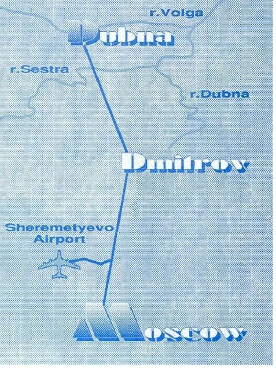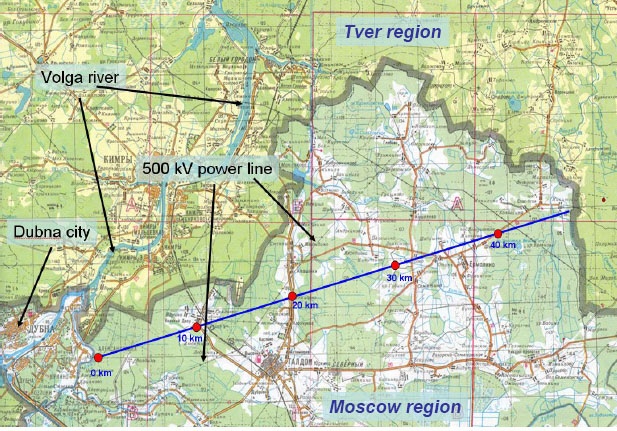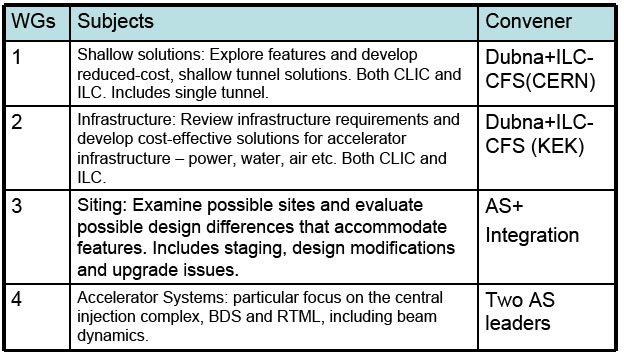Director's Corner
17 April 2008
 Barry Barish |
The GDE to meet in Russia
The next general meeting for the GDE will be at the Joint Institute for Nuclear Research (JINR) in Dubna, Russia. JINR is a large international laboratory with a long history in accelerator-related science. This meeting will have a thematic nature, exploring questions related to siting the ILC, as well as areas involving the accelerator design and other aspects of the ILC. This meeting will be our first to take place in the Russian Federation and we view it as an opportunity to explore ways to expand and deepen our Russian colleagues' involvement in the ILC.
The conventional facilities required for the ILC are mind-boggling. The reference design we produced last year contains a total of 72.5 kilometres of tunnel that are 100-150 metres underground, 13 major shafts that are at least 9 metres in diameter, 443 thousand cubic metres of underground excavation in caverns, alcoves and halls, and 92 surface buildings of 52.7 thousand square metres to directly support the underground activities. The combined conventional facilities account for about a third of the total cost of the ILC. Therefore, one of our major goals during the technical design phase of our work over the next few years is to understand all the trade-offs in these facilities, in order to make them as cost effective as possible and to understand the requirements before site proposals are solicited.
 The Joint Institute for Nuclear Research (JINR) is an intergovernmental organisation located in Dubna, north of Moscow. The Joint Institute for Nuclear Research (JINR) is an intergovernmental organisation located in Dubna, north of Moscow. |
The Dubna meeting will be the first meeting where we will bring conventional facilities to the centre of attention. This will give us the opportunity to address very broad issues like siting strategies, how to establish site requirements and how actual site proposals might be solicited and evaluated. We expect to work closely with the International Linear Collider Steering Committee in developing the actual strategies. The Dubna meeting will also selectively cover other topics, like the accelerator design of the central injector complex, including the ring-to-main-linac beam systems (RTML) and the beam delivery systems (BDS) to the interaction region.
We will also discuss a number of options for the conventional facilities that were deferred during the Reference Design Phase, including whether a more cost-effective single tunnel design is feasible from the point of view of safety and running time for the accelerator. We recognised during this phase that a double tunnel probably costs more, but it provides safety advantages, as well access to service and maintainance equipment, potentially yielding increased up time. We want to reexamine these arguments. A second question that we deferred is whether there might be advantages and potential large costs savings in shallow siting. In the reference design, all three sample sites that we considered were deep sites, with the accelerator roughly 100 metres below the surface.
The Dubna meeting will give us the opportunity to better understand the site put forward in Russia and do an informal site evaluation. This site will give us a 'real-world' example of a shallow site and we plan to consult with Russian experts on aspects of civil construction in Russia. For some of us, there will also be a helicopter excursion to view the site on Saturday following the main meeting.
At the Dubna meeting we also plan to examine the requirements for conventional facilities for both ILC and CLIC in a little more detail. The idea is to develop models for cost scaling to various alternative sites and conventional facility configurations, in particular shallow sites and single-tunnel options. We will also look at the conventional facilities of the machines and pay particular attention to the cost drivers (process cooling water etc.), hoping to understand the impact with respect to the choice of site configuration.
The meeting at Dubna will give us the chance to both meet with Russian officials and to visit and discuss joint areas of technical interest where we can strengthen the role of Russia in the ILC. We feel it is so important for us to hold this meeting in Russia that we are breaking from the tradition we have established of having our meetings in conjunction with the ILC physics and detector community meetings. This time, their meeting will be held the following week as an ECFA workshop in Warsaw, Poland. I will go to the Poland meeting to report on the GDE activities at Dubna and to stay in contact, so that we can maintain our close connections with the ILC physics and detector community. Our next common meeting will take place in Chicago in autumn.
-- Barry Barish

